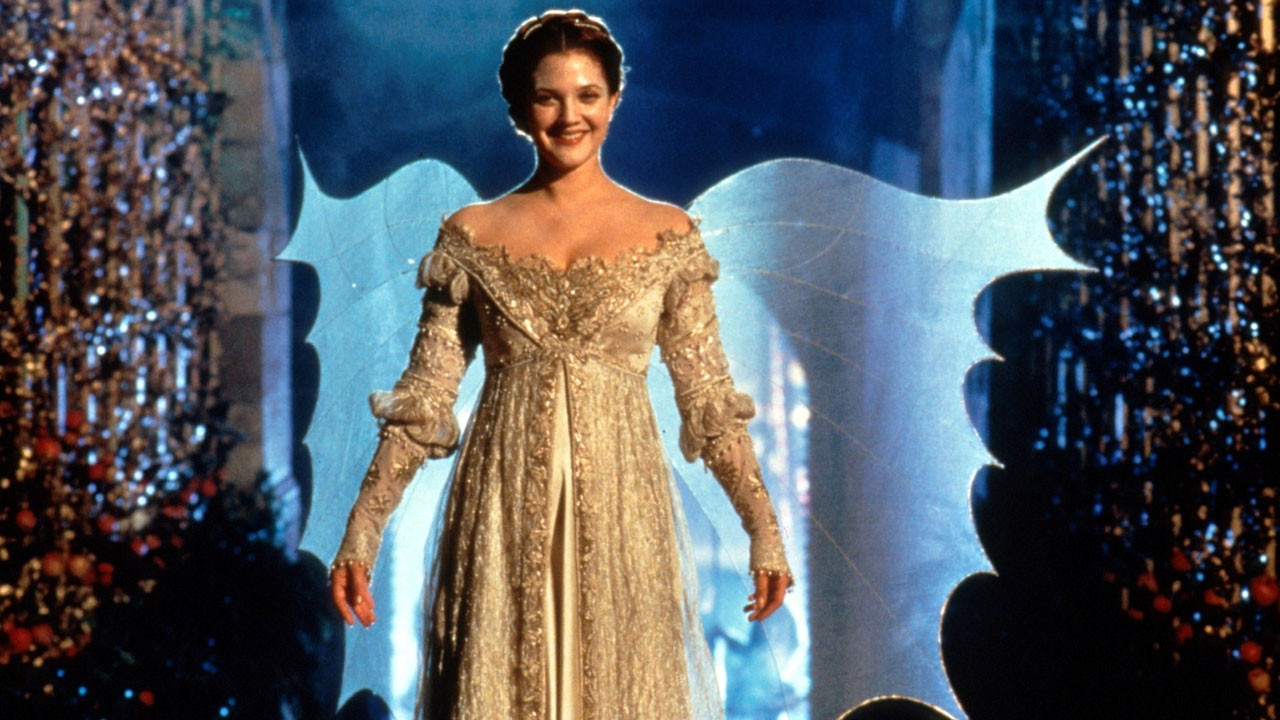Despite Its Flaws, Ever After Holds Up As A Magical Cinderella Story
Way better than that new one.

The recent success of Disney’s Cinderella was for me, a disappointment. Big and beautiful to look at, featuring a more-than-solid performance by the Great Cate Blanchett, it was also a shallow, unnecessary, and highlighted the story’s fundamental problems as a story targeted at little girls. One of the most frequent comments I saw about the film were comparisons to 1998’s Ever After – and these were also the comments I made to a friend on our way home from the film. Our conclusion, ultimately, was that, while Cinderella might be a well-made movie, Ever After is both a more fun and engaging version of the classic story.
Ever After isn’t a perfect movie by any means. Cinematically, the movie suffers from some ’90s indie grunge, which doesn’t hold up perfectly and makes if surprisingly dated. The “magic” of the story is removed in an attempt to root it in reality, and with that, the movie suffers from a relatively slow pace; despite only being two hours, a few cuts here and there would have been appreciated. Plus, Drew Barrymore’s inconsistencies in her Princess Leia accent are definitely bizarre, especially considering no one else attempted to put on an accent, and Barrymore’s natural voice works surprisingly well for the character.
But despite this, Ever After is a remarkably interesting experiment in adapting infamous works into something both original and timely. While the film’s cinematography and production design is dated, that same specificity of the time makes it a genuinely interesting piece of work. It is fascinating to consider what was going on during the ’90s that would make Ever After a property Hollywood would make… and why it wasn’t nearly as successful as the recent Cinderella.
In the late 1990s, with the rise of indie films, came big changes, and a dramatic increase in two aspects of cinema which made Ever After a reasonable venture. First, the internet’s increasing importance highlighted Hollywood’s dirty little secret of targeting white males, 18 to 35. With this now an accepted truth, there was a call for more films featuring women and minorities, and we saw an influx of female screenwriters and female producers. Susannah Grant (Erin Brockovich, 28 Days, and Pocahontas) and producers Mireille Soria and Tracey Trench came to film by way of television, and this led to a brief but successful period of work.
One of the things I love, despite the outcry I know people had over the corny dialogue, is the narrative framing that insists Cinderella was a real woman. Why? Because it addresses the idea that there is a history of appropriating history as those in power want. The Brothers Grimm were men, writing in a time when women didn’t just lack rights, but were property. Ever After acknowledges that these stories are passed on and changed, often to maintain or change the cultural norms. How appropriate that the film suggest the story might be wrong, in an attempt to appropriate the story for a new era.
Ever After is wonderful. I think Togetherness’s Melanie Lynskey is fabulous as step-Sister Jacqueline, and Megan Dobbs as Marguerite is deliciously wicked as her older sister, the one put forward as the family’s only hope for a better life through marriage. While I’ve heard some say it furthers the idea that women are forced to compete with other women, it’s actually drawing attention to the fact that the institutional devaluing of women as property, with no options for advancement, is what creates such rivalry. Angelica Huston’s step-mother is certainly wicked, and a bit one-note in this film (one area in which I think Blanchett’s character is an improvement), but you can also understand the animosity she has towards her step-daughter. While her cruelty is inexcusable, she is saddled with a third daughter and no husband in a time when women were destitute without a husband or son to marry for a dowry.
But the reason I think Ever After really works is the new approach to Cinderella and her Prince Charming. Barrymore’s performance as Danielle is, like most Cinderellas, a static character; however, this version is far more demonstrative and active, and therefore creates a heroine worthy of admiration. It works for a story of this nature because she’s faced with so many external struggles, and needs to have that internal strength from the very beginning. The character who needs to make the greatest evolution is, of course, Prince Henry (Dougray Scott), from immature boy into a man worthy of Danielle, helped by Leonardo Da Vinci (Patrick Godfrey). And he does so without having to become the savior.
Ever After may lack the literal magic of most Cinderella stories, but I never miss the fairy godmother or stroke of midnight rule when watching the film. I’ve seen enough films from the past with those elements, and I can always go back and re-watch them. In the 1990s, when Disney sold an awful lot of princess costumes to little girls, Ever After was a more-than-necessary alternative for girls. Even today, despite some clunky dialogue, pacing problems, and a weird accent, the movie is both more inspiring and entertaining than the recent classic retelling that reinforces a Disney image from 65 years ago.
Lesley Coffin is a New York transplant from the midwest. She is the New York-based writer/podcast editor for Filmoria and film contributor at The Interrobang. When not doing that, she’s writing books on classic Hollywood, including Lew Ayres: Hollywood’s Conscientious Objector and her new book Hitchcock’s Stars: Alfred Hitchcock and the Hollywood Studio System.
Are you following The Mary Sue on Twitter, Facebook, Tumblr, Pinterest, & Google +?
Have a tip we should know? tips@themarysue.com